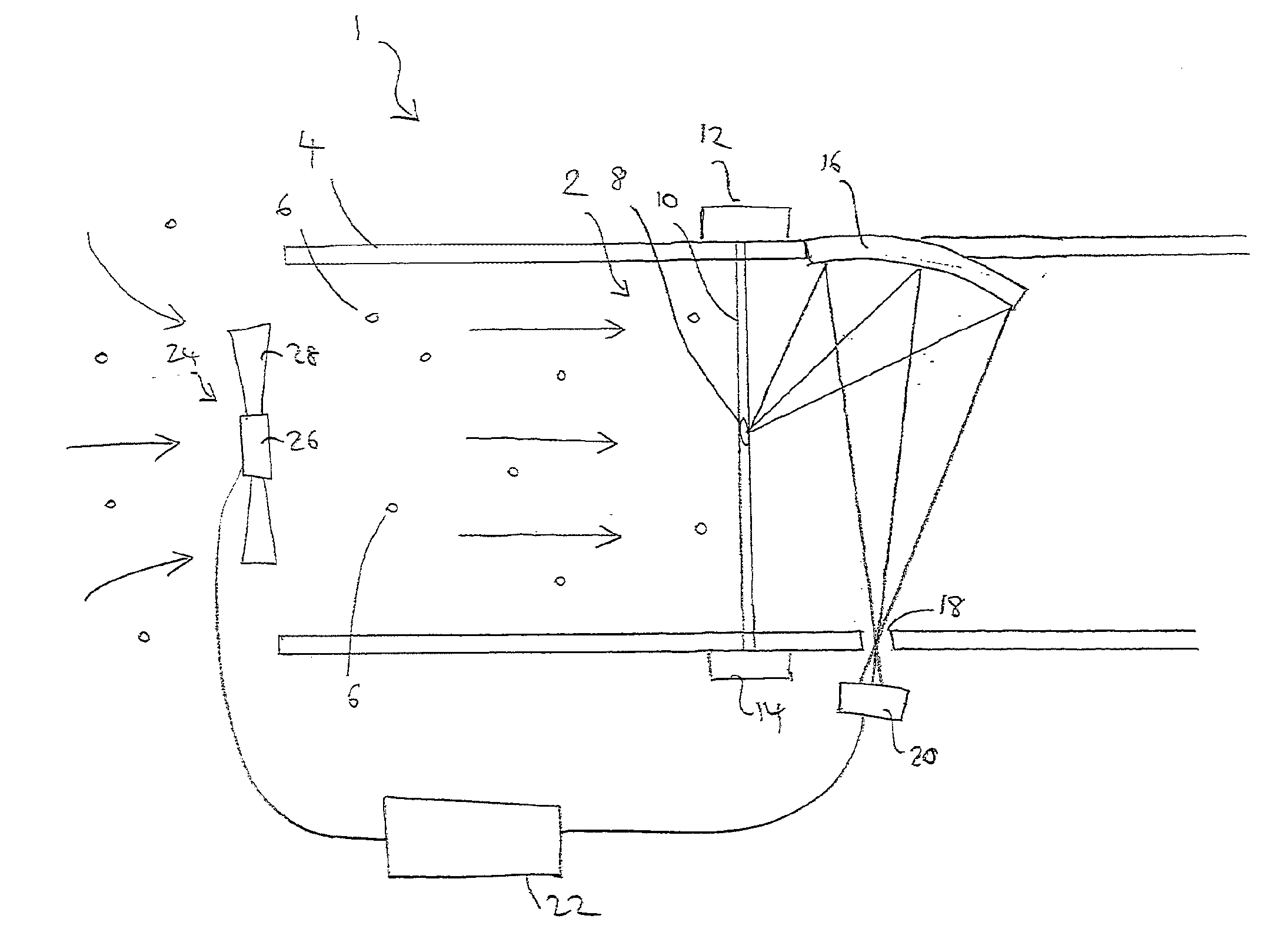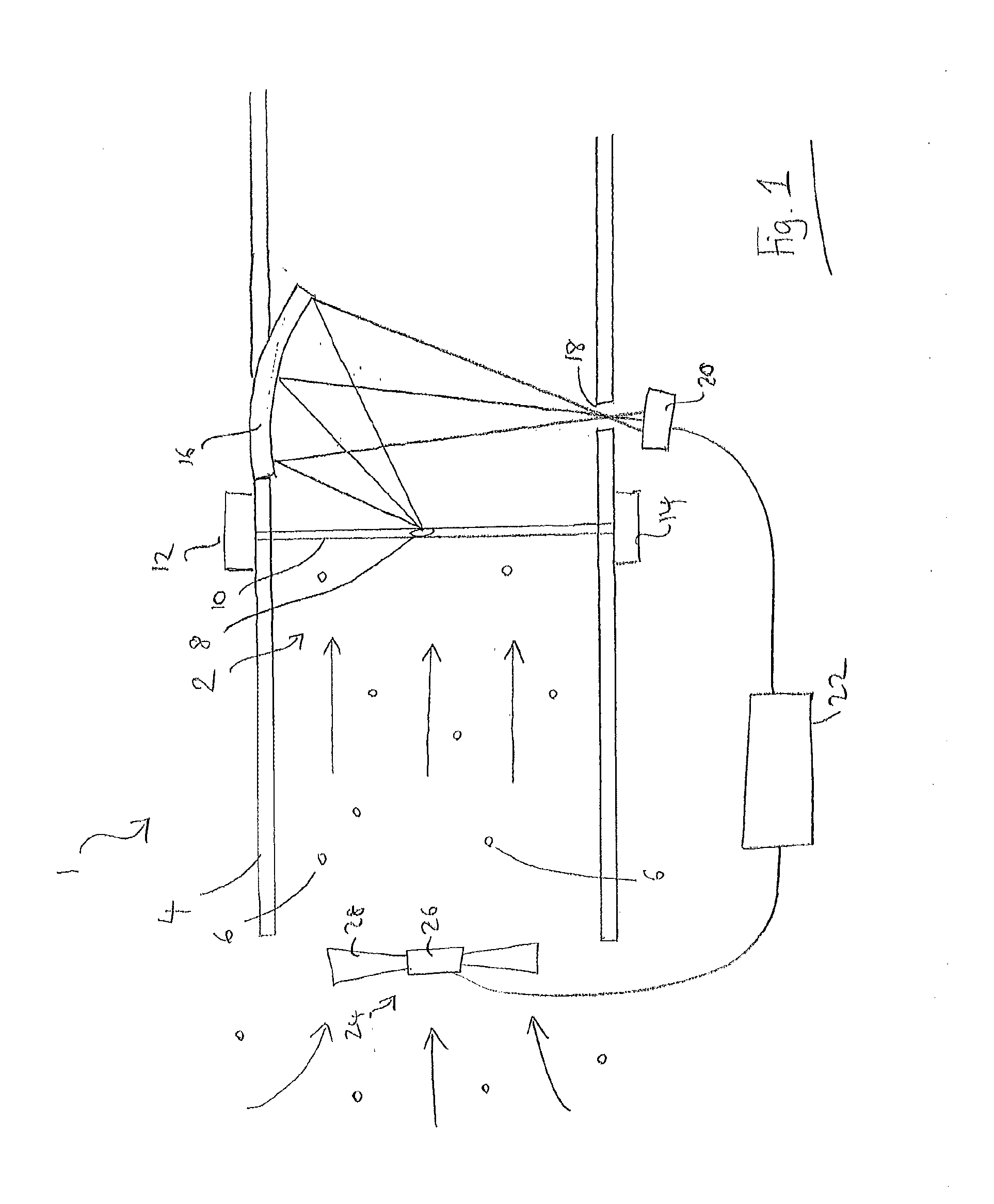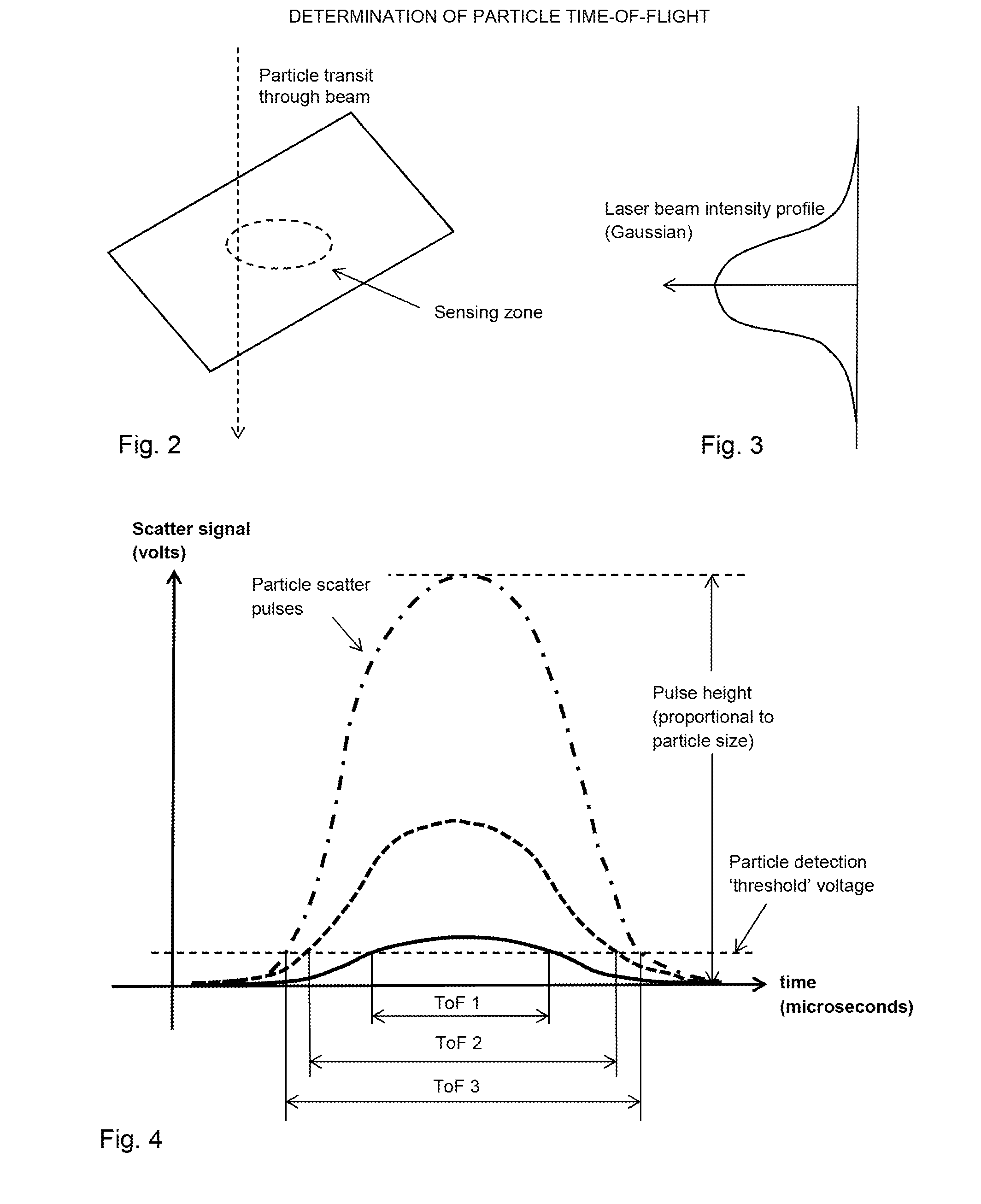Optical particle counter
- Summary
- Abstract
- Description
- Claims
- Application Information
AI Technical Summary
Benefits of technology
Problems solved by technology
Method used
Image
Examples
first example
rticle Concentration for Particle Velocity
[0041]With reference to FIG. 1, an optical particle counter 1 has a scattering chamber 2, in this example defined by a tube 4 through which an air sample flows in use, bearing particles 6 to be detected. The scattering chamber includes a particle detection zone 8. The optical particle counter counts and determines the size of particles which transit the particle detection zone. A laser beam 10, functioning as the beam of radiation, is generated in use by laser 12 and extends through the scattering chamber to a beam dump 14. A parabolic reflector 16 directs light from the laser beam which is scattered by particles in the particle detection zone through an aperture 18 to a photodetector 20 (the detector, for example a photodiode) which outputs a measured light intensity signal to a processing circuit 22. One skilled in the art will appreciate that the processing circuit may be implemented by a microprocessor or microcontroller executing a comp...
PUM
 Login to View More
Login to View More Abstract
Description
Claims
Application Information
 Login to View More
Login to View More - R&D
- Intellectual Property
- Life Sciences
- Materials
- Tech Scout
- Unparalleled Data Quality
- Higher Quality Content
- 60% Fewer Hallucinations
Browse by: Latest US Patents, China's latest patents, Technical Efficacy Thesaurus, Application Domain, Technology Topic, Popular Technical Reports.
© 2025 PatSnap. All rights reserved.Legal|Privacy policy|Modern Slavery Act Transparency Statement|Sitemap|About US| Contact US: help@patsnap.com



